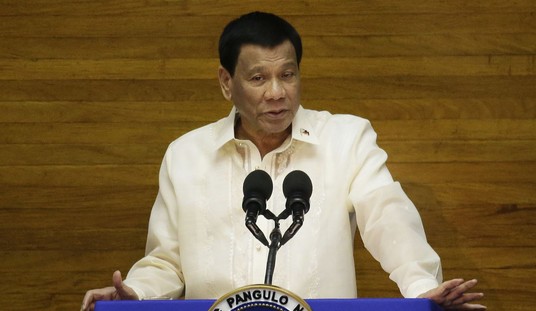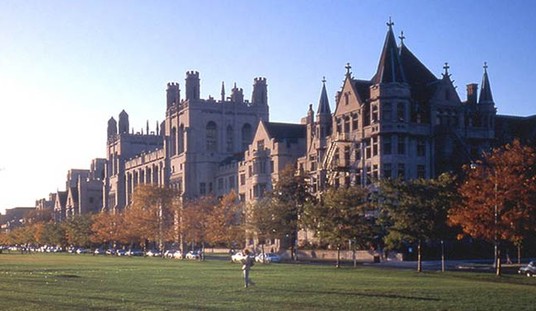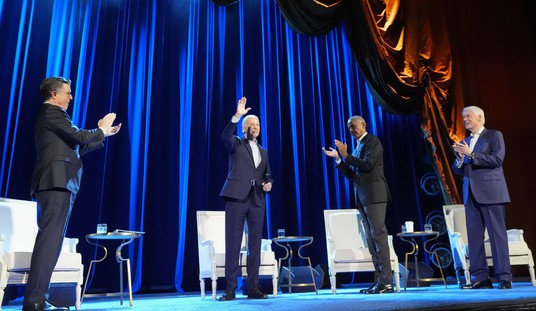In all the sturm und drang about the debt ceiling deal, how this passed under the outrageous outrage radar, I have no idea, but it tickles me to death.
Now, I had only heard the bloviating about how the agreement did nothing to truncate Biden’s student loan give-away and snarl snarl snarl. But, in and of itself, that would seem like a waste of negotiating ground to me as there’s a fair chance SCOTUS will deep-six it in any event. What I think is really nifty is what McCarthy and his fellows got in this package as far as the never-ending payment pause went.
The party’s OVER. The agreement prohibits any further extensions of the “emergency payment pause” after the 30 August cut-off.
The deal reached by President Joe Biden and House Speaker Kevin McCarthy to raise the nation’s debt limit would force the administration to resume collecting federal student loan payments and interest for millions of Americans at the end of the summer.
The agreement, the text of which was unveiled Sunday evening after weeks of negotiations between the White House and GOP leaders, would terminate the ongoing pause on monthly payments and interest after Aug. 30.
I love the so sad language: it would “FORCE the administration to resume collecting” all those years late payments and interest, and piss off boatloads of well-to-do, graduate degreed Democratic voters.
[CUE: sad trombone]
The usual suspects (“student debt activists” *SNORT*) are all in on a we-want-everything-free-until-it’s-free-forever plan. They’ve kind of taken to not having to pay for anything they agreed to pay for.
…Progressives and student debt activists have said that payments should remain paused at least until the Biden administration is able to deliver on the debt cancellation it promised last year.
The Biden administration had extended the pause 5 times – FIVE! – since taking office. Talk about shaky justification – it was costing enormous amounts of lost revenue at a time of low unemployment and a vaporizing “pandemic.” These people couldn’t resume paying again, why?
…The pause on payments, which also set interest rates on student loans at zero percent, has been in effect since the pandemic began in spring 2020, and affects roughly 43 million people with federal student loans. According to the Committee for a Responsible Federal Budget, the pause has cost an estimated $5 billion a month, totaling an estimated $195 billion since it began.
In November, the Education Department announced the latest extension of the student loan payment pause. It was the fifth time the Biden administration extended the pause first put in place under President Donald Trump.
That’s the good news. The bad news may be getting the money. In the first place, over a quarter of these loans were in delinquent territory before the pandemic. And now they’ve had over 3 long years with all that extra money as part of household/spending budgets, and you know it wasn’t going into being prepared for the inevitable.
…Even before the public health crisis, when the U.S. economy was enjoying one of its healthiest periods in history, problems plagued the federal student loan system, with about 25% — or more than 10 million borrowers — in delinquency or default.
Experts say hardship rates are likely to only increase with the setbacks of the pandemic, the current sharp rise in prices on everyday goods and the fact that borrowers have gotten used to a budget sans student loans.
Back in November, I noted part of the Biden argument for forgiving student loans was that they hadn’t paid for them in so long, why would they start up paying again now?
…As I wrote earlier this month, once word of this “forgiveness broke (before the election of course), borrowers were already spending their ill-gotten lucre in their heads. The Biden administration, in their court filings, had the unmitigated nerve to assert that, because the payments had been paused for so long, those amounts had already become part of a regular budget and would cause irredeemable harm if they had to be recouped to pay that student debt. Shoot! They just might not pay another dime at all, they’re going to be so disappointed.
To be sure, that is a not insignificant amount of money now circulating that, if redirected back where it belongs, presents its own risks. Concerns are it could collapse consumer spending, which is the primary driver of the U.S. economy. The forbearance on student debt amounts dwarf any other COVID spending.
…Well, according to Jefferies, the return of monthly loan payments presents risks similar to the effects of the 2013 fiscal cliff, when tax increases led to reduced consumer spending. And in a note released Monday (available to pro subscribers), JPMorgan’s chief US economist Michael Feroli said that the end of the payment moratorium will reduce annual disposable personal income by $38 billion, which will reduce consumer spending.
…As noted above, Education Secretary Miguel Cardona said the student loan deferment program will end no later than June 30, 2023, and payments are expected to resume by Sept. 1, 2023: “The amount of money we are talking about, in excess of a trillion dollars, is staggering. Student loans represent 7% of U.S. GDP” according to FrightWaves.
Putting these numbers in context, 64% of the $1.7 trillion in student loan debt have been in forbearance for the past three years, amounting to $1.1 trillion. Many of the 25 million Americans who have deferred payments for student debt are aged 18-44 years old, one of the most important demographic groups that drive consumer spending.
Some more math: according to a New York Fed study, the average student loan payment is $393 per month.
For consumers taking advantage of the program, they have deferred 39 months worth of payments, resulting in more than $15,327 in additional discretionary income during the period, much larger than the amount most consumers received from other COVID stimulus programs.
It shouldn’t be a “suddenly $400 a month poorer” but it’s going to feel like it after a multi-year long holiday. And, for that all important 18-44 spending demographic, that could really be a hit, both financially and psychologically. They could, conceivably, curl into fetal balls and refuse to spend anything further on “stuff.” Yeah, that pullback would be crippling.
But, hello. They owe the repayment on those debts – I don’t – and I am delighted the shifting due dates game is over and done with.
My sympathy meter is pegged as far as their situation goes.
I’m tired of watching people skate by.







Join the conversation as a VIP Member